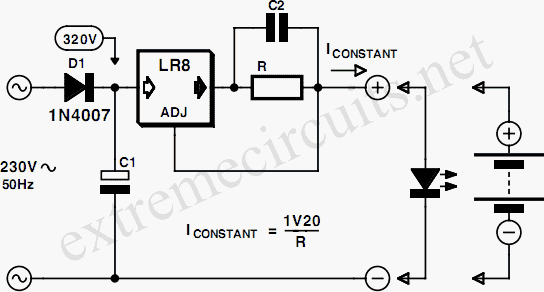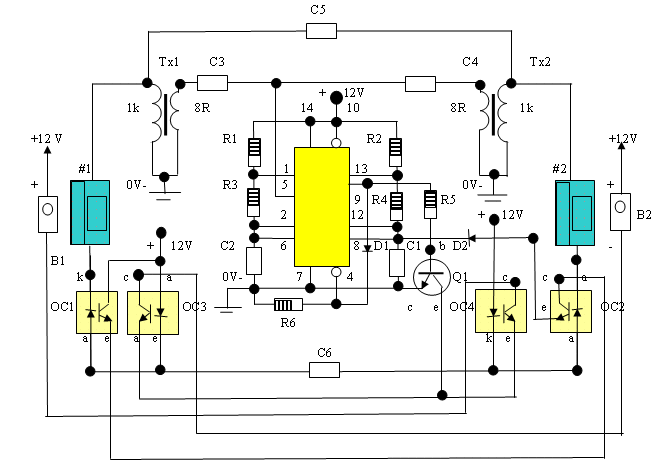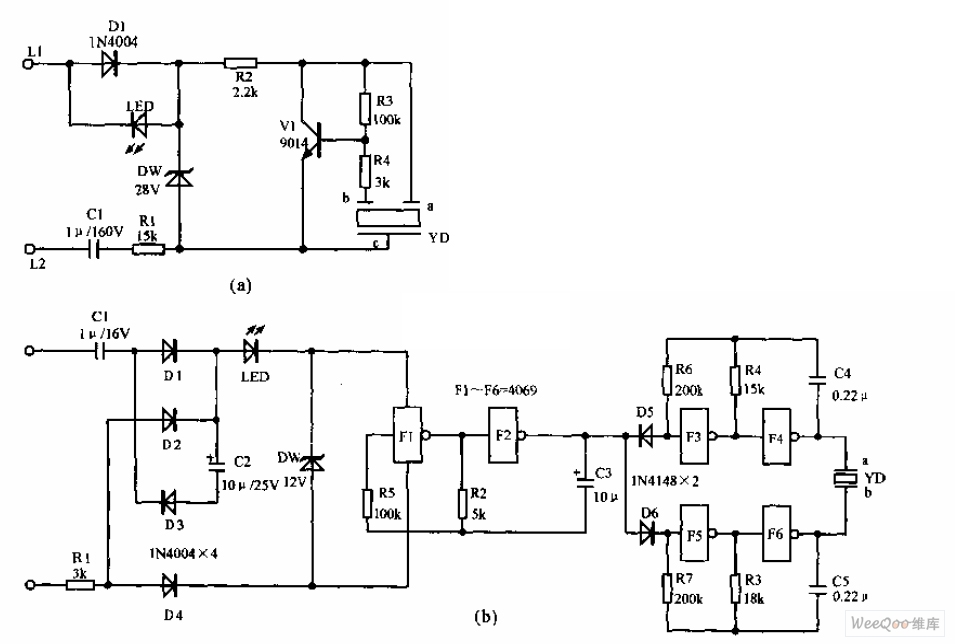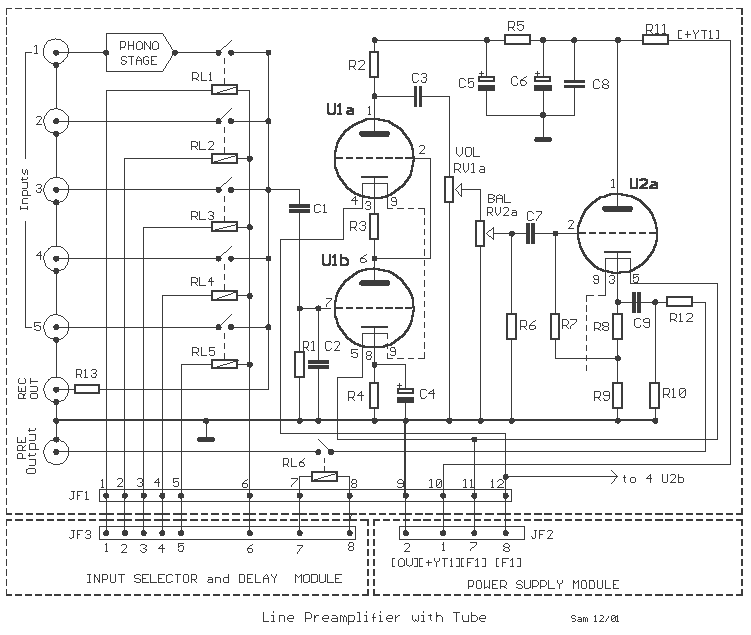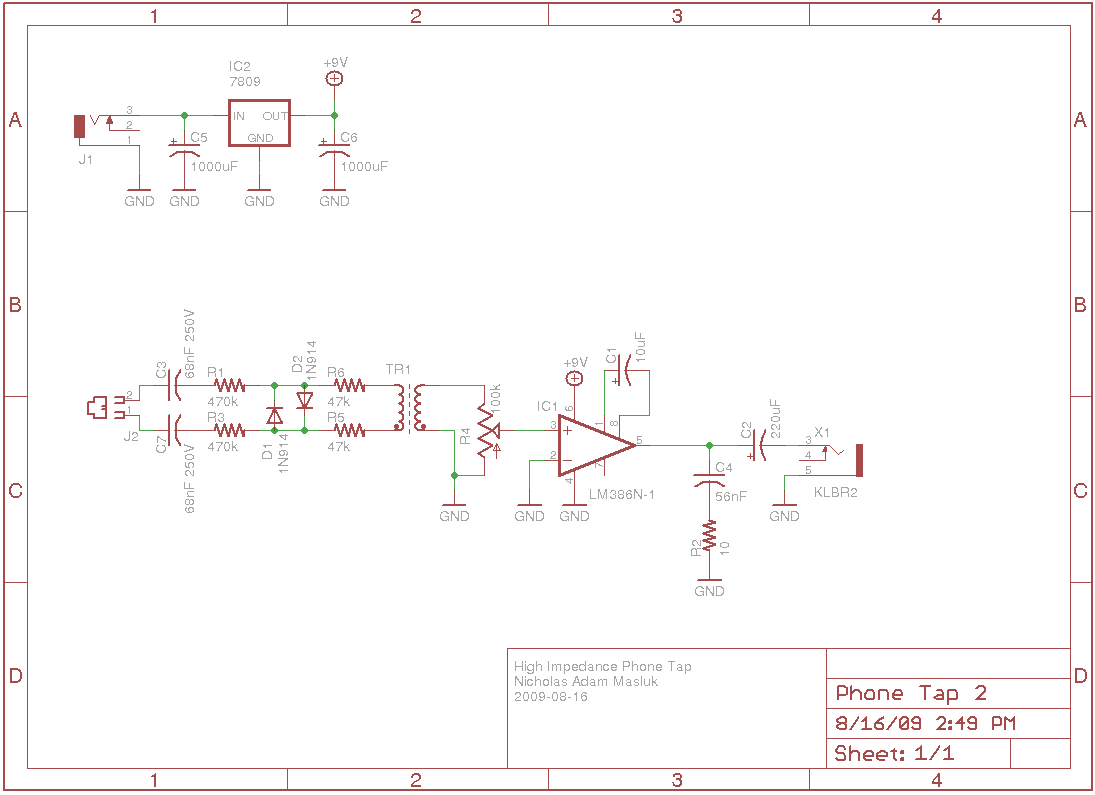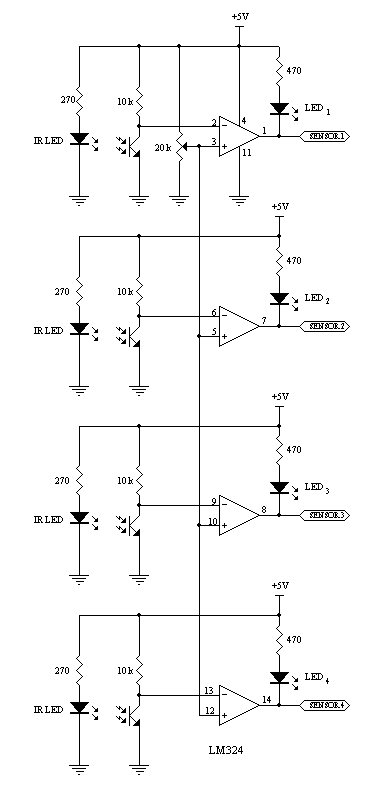
Telephone line monitors
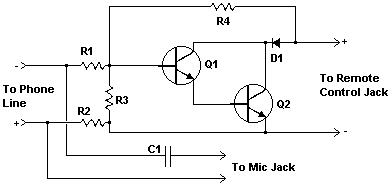
This compact circuit enables automatic recording of phone conversations. It connects to the phone line, the microphone input of a tape recorder, and the remote control jack of the recorder. The circuit detects the voltage on the phone line and initiates recording when the voltage drops to 5 volts or lower. It is important to note that in some jurisdictions, individuals must be informed that the conversation is being recorded, often indicated by a beep sound. Additionally, permission from the phone company may be required before connecting any devices to their lines.
The automatic phone conversation recording circuit operates by utilizing a voltage sensing mechanism that monitors the telephone line's voltage levels. When the phone is in use, the line typically maintains a voltage above 5 volts. However, when the phone is picked up, the voltage drops below this threshold, triggering the circuit to activate the recording process.
The circuit typically consists of a voltage divider, which reduces the phone line voltage to a safe level suitable for the circuit's components. An operational amplifier or a comparator can be used to detect the drop in voltage accurately. Once the voltage falls below the specified threshold, a transistor or relay switches on, allowing current to flow to the tape recorder's microphone input. This connection ensures that the audio from the phone call is captured effectively.
To comply with legal requirements regarding consent, the circuit may include a sound generation module that emits a beep or tone to alert the parties involved in the conversation that recording is in progress. This feature can be implemented using a simple timer circuit or a microcontroller programmed to produce the notification sound at the start of the recording.
The design must also consider isolation and safety measures to prevent any potential damage to the phone line or the recording device. Components such as diodes can be used to protect against voltage spikes, and proper grounding techniques should be employed to avoid hum or noise in the recorded audio.
In summary, the automatic phone conversation recording circuit is a sophisticated yet straightforward design that allows for the seamless capture of telephone audio while adhering to legal and ethical standards. Proper implementation and testing ensure reliable operation and compliance with local regulations regarding recording conversations.This nifty little circuit lets you record your phone conversations automatically. The device connects to the phone line, your tape recorder`s microphone input, and the recorder`s remote control jack. It senses the voltage in the phone line and begins recording when the line drops to 5 volts or less. 2. Some countries or states require you to notif y anyone you are talking to that the conversation is being recorded. Most recoders do this with a beep-beep. Also, you may have to get permission from the phone company before you connect anything to their lines. 🔗 External reference
The automatic phone conversation recording circuit operates by utilizing a voltage sensing mechanism that monitors the telephone line's voltage levels. When the phone is in use, the line typically maintains a voltage above 5 volts. However, when the phone is picked up, the voltage drops below this threshold, triggering the circuit to activate the recording process.
The circuit typically consists of a voltage divider, which reduces the phone line voltage to a safe level suitable for the circuit's components. An operational amplifier or a comparator can be used to detect the drop in voltage accurately. Once the voltage falls below the specified threshold, a transistor or relay switches on, allowing current to flow to the tape recorder's microphone input. This connection ensures that the audio from the phone call is captured effectively.
To comply with legal requirements regarding consent, the circuit may include a sound generation module that emits a beep or tone to alert the parties involved in the conversation that recording is in progress. This feature can be implemented using a simple timer circuit or a microcontroller programmed to produce the notification sound at the start of the recording.
The design must also consider isolation and safety measures to prevent any potential damage to the phone line or the recording device. Components such as diodes can be used to protect against voltage spikes, and proper grounding techniques should be employed to avoid hum or noise in the recorded audio.
In summary, the automatic phone conversation recording circuit is a sophisticated yet straightforward design that allows for the seamless capture of telephone audio while adhering to legal and ethical standards. Proper implementation and testing ensure reliable operation and compliance with local regulations regarding recording conversations.This nifty little circuit lets you record your phone conversations automatically. The device connects to the phone line, your tape recorder`s microphone input, and the recorder`s remote control jack. It senses the voltage in the phone line and begins recording when the line drops to 5 volts or less. 2. Some countries or states require you to notif y anyone you are talking to that the conversation is being recorded. Most recoders do this with a beep-beep. Also, you may have to get permission from the phone company before you connect anything to their lines. 🔗 External reference
